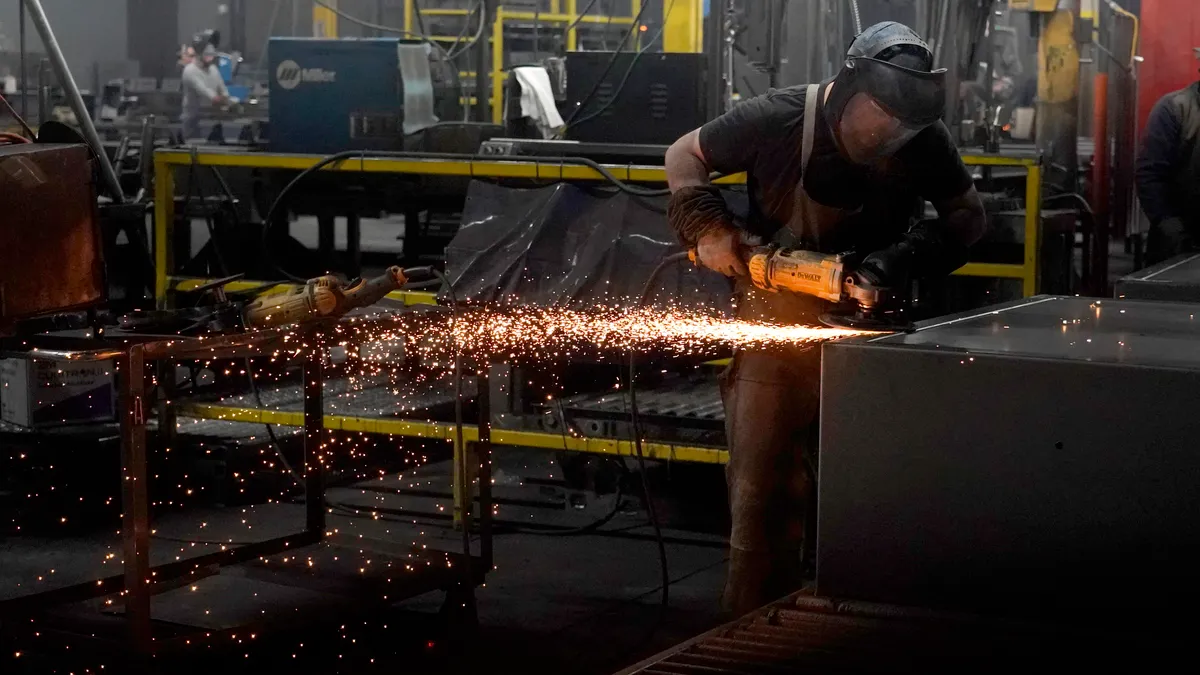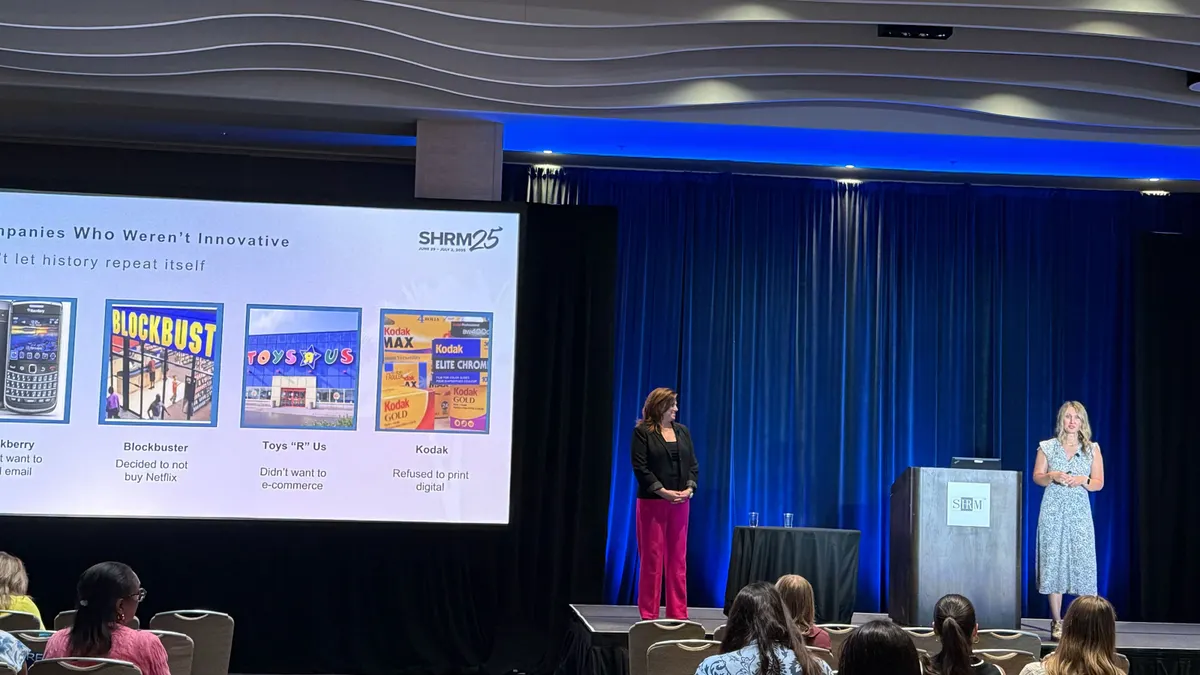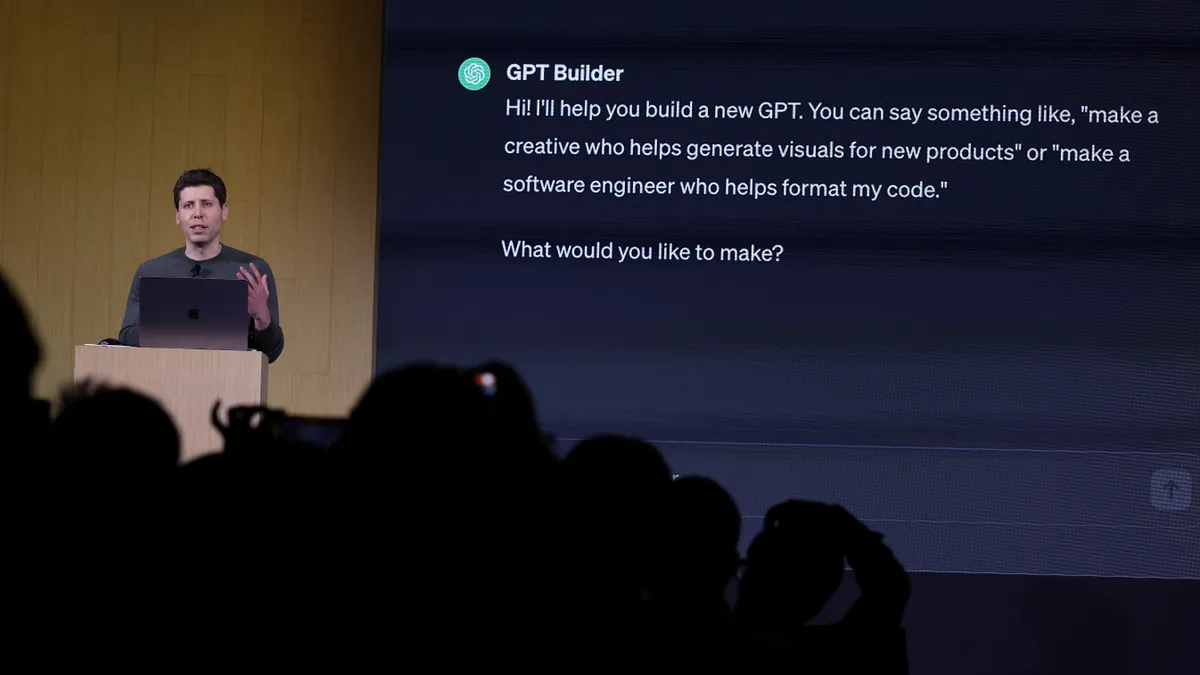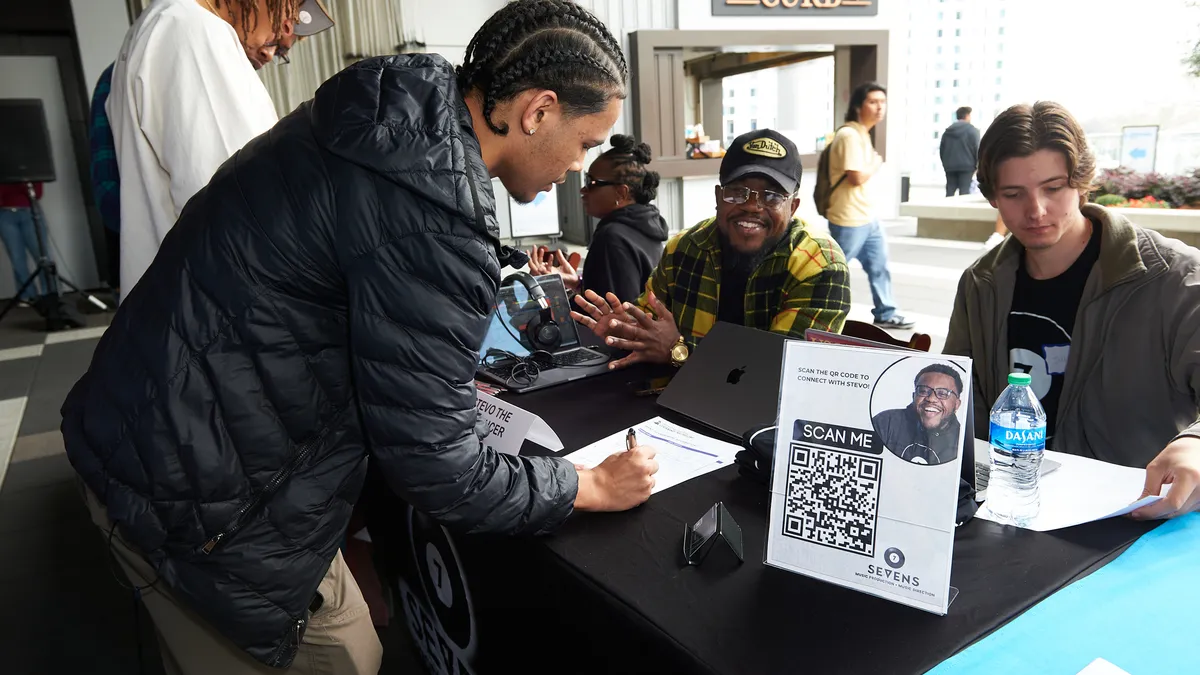When it comes to learning technology, the offerings are robust — almost too robust, according to some. And experts agree that the "human element" cannot be ignored.
HR Dive talked to three learning and technology experts for their perspective on this quickly expanding field: Shane McFeely, an industrial-organization psychologist for Gallup; Christa Manning, an independent technology analyst, and Julie Hiipakka, learning research leader at Bersin, Deloitte Consulting LLP.
What's new in learning technology right now?
Busy schedules and convenience for the learner are driving a lot of what's new in today's learning technology.
McFeely says the "mainstay of learning technology today" is the explosion of "massive online courses" such as Coursera; but folks are also doing more microlearning and more synchronous and asynchronous online learning because that fits their busy schedules. "In terms of what we are doing today — a lot of that is just-in-time learning, learning to fit your schedule," McFeely said.
Hiipakka said tools and technology that bring learning directly into the work itself, so that the worker doesn't have to go into a learning experience platform, are part of the abundance of solutions available today. Such tools offer up knowledge when you need it, she said, so that you don't have to stop what you are doing and go find knowledge in some separate place, or "take an hour of your day that you don't have to go learn something in a course."
Machine learning, people analytics and performance analyses — aka figuring out how learning is having an impact — are the trends that Manning has observed. On the front end, she said, artificial intelligence is by far the leading tool that companies are examining. But on the back end, there's more maturity around analytics and taking the data about what people are learning to identify what is having an impact, she said.
How are employers responding?
Organizations are responding by making sure that the learning and professional development they provide their employees "is more fit for their jobs," McFeely said, adding that machine learning is being used to make recommendations for additional learning, what he called "Netflixation." Immersive content is also being used by employers to make sure that the needs of the learner are being met by the content presented.
Traditional learning involves being in a classroom with paper and pencil. "It's not like that anymore," McFeely said. "What we see is gamification — getting folks points or badges on what they are learning. You see things like virtual learning and augmented learning — those are more immersive experiences."
Employers are getting more out of our training experience, McFeely added because: 1) they are customized for the learner; 2) they are more enjoyable because they are more relevant to their job; and 3) because it's an immersive experience, it makes learning interesting and fun.
"The days of trying to have one system that does everything is, I believe, over," Hiipakka said. "Many organizations are relying on a diverse suite of tools to bring knowledge to workers when and where they need it."
But it's not just about technology, she added; organizations are recognizing that they have to evolve the mindset.
"It's not just about technology, it's about how people think. So, there's a major mindset shift that leaders and individuals have to go through," Hiipakka said.
How are learning professionals adapting to this shift?
"Learning professionals have been slow moving. I think that with any good technology it takes a little bit of folks testing it out and making sure that it's going to work for their organization," McFeely said, noting that gamification, microlearning and blended learning are more often seen than augmented and virtual training.
Gallup has been investing heavily in microlearning, blended learning techniques and some digital follow-ups, McFeely said, adding that Gallup's digital learning has expanded quite a bit. Today, the company offers synchronous and asynchronous online courses.
Employers are gaining skills in people analytics and getting comfortable with understanding how the data comes in and out of their systems, Manning said; research has shown that HR and learning pros are becoming more savvy about data and analytics. Curation remains a key trend this year, she added. The learning function in tech isn't necessarily about creating the content — it's about finding and understanding it, analyzing it and helping to apply it, akin to marketing.
Is there a downside to emerging tech?
"One of the difficulties is ensuring that the learner is comprehending the content that is being taught to them. So, when you are in a traditional in-class learning experience, it's very easy to see when the learner is not picking up what you are trying to teach them or that they are a little bit lost or you need to go over an aspect," McFeely said.
One of the drawbacks of modern learning tech is that you don't have that human touch that can determine whether or not the learner is following along with the content and getting the best learning experience out of it, he said.
"I think that if we lose sight of the fact that we are all still human, it creates a challenge," Hiipakka said. "Fundamentally, all of these things are enablers to help us be more productive, to do different things, to have different life experiences. If we put the tech in front, we might lose sight of the fact that this is going to help us all be more productive and happier and, maybe, live a different life than we have lived before."
What's not working in learning tech right now?
Overall, there has been an overselling of the cloud, Manning said. Employees may be currently going back and forth between a lot of cloud applications that have different interfaces — not great for productivity.
The cloud did allow learning technologies to become more widely adopted and to have more innovation, but that innovation has partially led to a plateau, Manning said. Employees essentially get stuck not doing their actual work; they are doing digital transactions and digital tasks for the company, but not serving the customer.
What's next for learning technology?
McFeely was enthusiastic about augmented reality training and virtual reality training becoming more widespread. Right now, he said, such training is being used in "pockets," such as Boeing and NASA and for training for police officers and pilots. As that tech becomes cheaper and more widely used, McFeely said, it could become integrated in some places that aren't "quite so high stakes," such as assessment centers.
There's a lot of talk about embedding learning in the flow of work, Manning said. But, a lot of the applications have different interfaces and so, "a little bit more maturity" is needed, she added.
What are some best practices learning professionals right now?
It's good to focus on the purpose of the training and not be enamored of the technology, McFeely said. Also, he said, make sure that the content, the mode and the worker's needs are aligned. Some content is better taught in a traditional course and through human interaction and discussion: some things can't be put into microlearning. You probably don't want to learn calculus in a microlearning environment, McFeely said.
The worker-centric perspective also has to prevail, Hiipakka said, and there are several points that need to be addressed:
- Consider: How are you making it easy for workers to do their jobs?
- Focus on thinking less about content and courses and curricula and a lot more about how you are working with your business to create an organization that learns all the time.
- Use data and share information with workers so they understand how they are performing in a variety of ways.
- Examine mindset. How do you encourage risk taking? How do you use mistakes as learning opportunities? How do you advocate as a learning professional and an HR leader? These are some of the key areas to be thinking about, Hiipakka said.



















